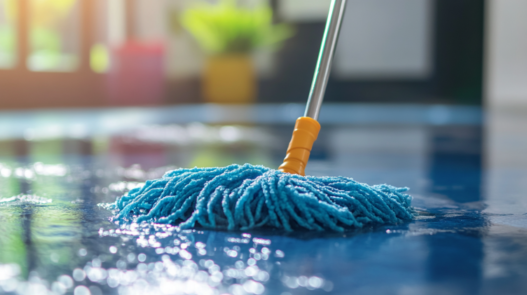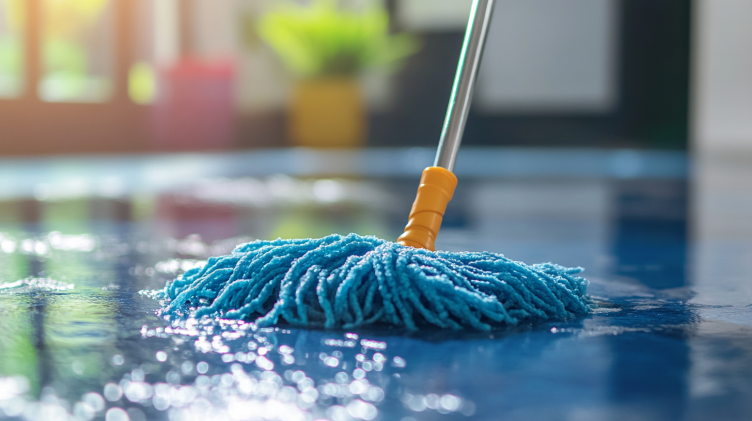If you’ve ever noticed a peculiar, unpleasant odor after mopping your floor, especially on ceramic tiles, you’re not alone. This phenomenon is more common in humid environments or areas that aren’t regularly cleaned. But why does a seemingly clean mop leave behind such a smell? Is it the mop’s fault, a chemical reaction during the cleaning process, or something to do with the type of flooring you have? Let’s explore the causes behind this frustrating issue.
The Real Culprit: A Dirty Mop
A dirty mop is often the primary source of that foul smell. Many people overlook the importance of properly drying and storing their mops after use. Often, wet mops are left in damp corners, like bathrooms, where they quickly become breeding grounds for bacteria and fungi.
As microorganisms accumulate and multiply on the mop, they engage in anaerobic metabolism. This process creates gases such as hydrogen sulfide, ammonia, and organic acids, which produce the unpleasant smell we associate with “dirty mop odor.”
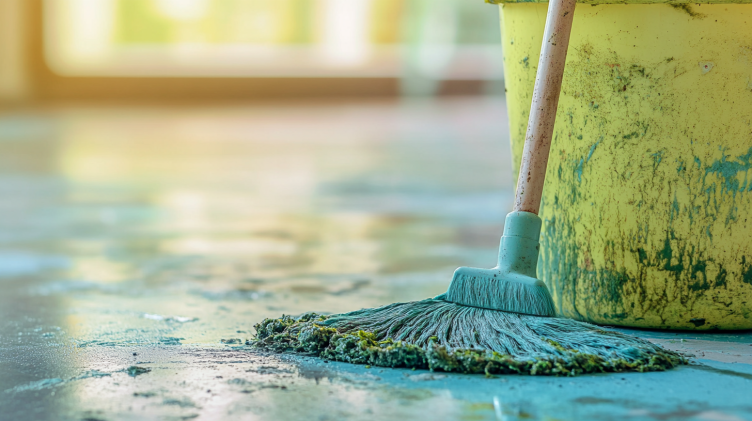
Additionally, the water used for mopping can contain nutrients like nitrogen, phosphorus, and organic matter, which promote the growth of algae. When using phosphate-based cleaning agents, this problem can become even worse. When algae die or are subjected to low-oxygen conditions, they release sulfur gases such as hydrogen sulfide and dimethyl sulfide, contributing further to the foul smell.
In some areas, poor water quality—especially water containing colloidal impurities and organic matter—can also be to blame. These substances can turn into gases with distinct smells like trimethylamine and dimethyl sulfide, further enhancing the odor problem.
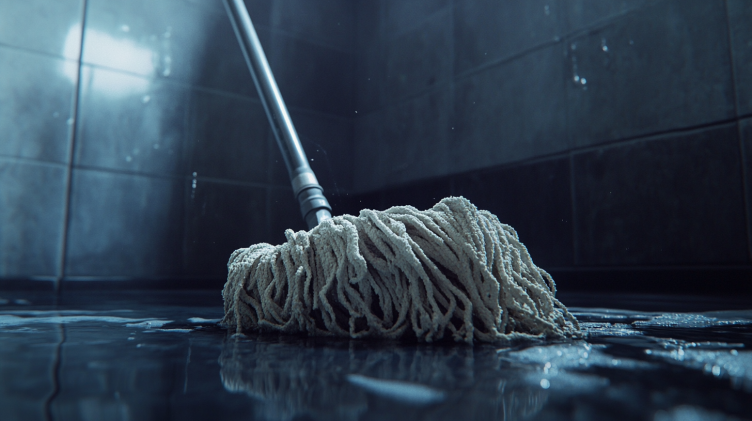
Poor-Quality Tiles Contribute to the Odor
Not just the mop, but your floor tiles might also be playing a role in creating that unpleasant smell. Many homeowners choose ceramic tiles in their living areas, believing that they are better than wood flooring, which could emit formaldehyde. However, low-quality ceramic tiles can sometimes be a source of bad odors.
Tiles that are poorly fired—such as cheap black or yellow ceramic tiles—may release sulfur-containing gases like sulfur dioxide and hydrogen sulfide during manufacturing. These gases get trapped in the tile’s micropores and, over time, can emit foul odors. Furthermore, such tiles tend to be less durable, absorbing water more easily and allowing microbes to thrive in the tile’s porous structure.
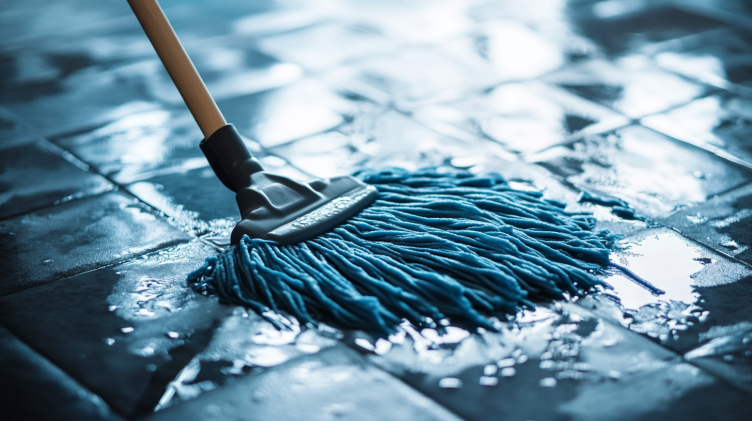
When dust or dirt inside the tile absorbs moisture, it can also generate unpleasant smells. The combination of the tile’s natural odor and microbial activity can lead to a distinctly fishy or rotten smell over time. Therefore, it’s important to invest in high-quality tiles for your home to maintain a clean and pleasant living environment.
Is the Smell Only a Problem with Ceramic Tiles?
Some people believe that only ceramic tiles cause these foul smells, while wooden floors don’t have this issue. This is actually a misconception. In reality, the problem has more to do with the condition of the mop, the water quality, and cleaning habits, rather than the material of the floor itself.
Whether you have ceramic or wood flooring, if your mop is frequently wet, the water is dirty, or you don’t change the cleaning water often enough, you can experience bad smells. So, the odor problem isn’t exclusive to tile floors but can occur on any type of flooring if the proper cleaning practices are neglected.
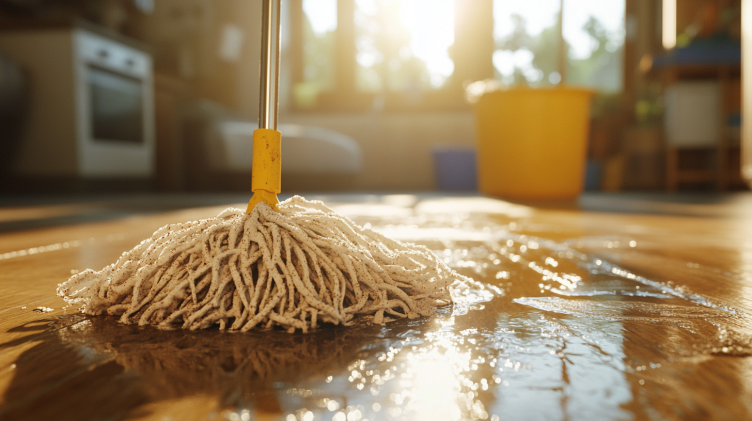
Does Magnesium Silicate in Low-Quality Tiles Cause the Smell?
A common theory is that the unpleasant odor comes from magnesium silicate found in low-quality tiles. When magnesium silicate reacts with water, it supposedly releases a gas called silane, which has a fishy smell.
While this sounds plausible, it doesn’t stand up to scientific scrutiny. Magnesium silicate is a stable compound and does not react with water under normal conditions. Even if you use hot water on the tiles, magnesium silicate will not produce silane, as silane is a colorless, odorless gas. Thus, the idea that magnesium silicate creates this smell when wet is chemically incorrect.
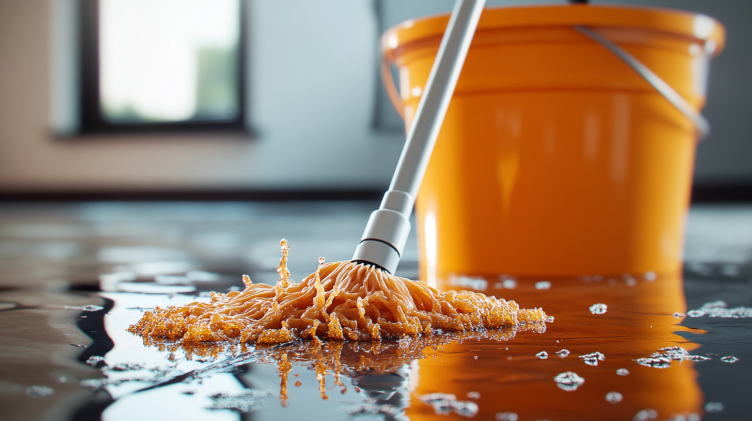
How to Avoid the Foul Smell When Mopping
To prevent bad odors when mopping, here are a few tips you can try:
- Clean Your Mop Regularly: Be sure to replace the cleaning water frequently. Ideally, change the water every time you rinse the mop. After mopping, rinse and dry the mop immediately in a well-ventilated area, like the balcony. Never leave it in a damp, enclosed space. Similarly, make sure to clean and dry the mop bucket after each use.
- Use Floor Cleaning Sheets: Floor cleaning sheets contain surfactants, biodegradable enzymes, antibacterial agents, and fragrance compounds. These can help dissolve dirt on the floor while eliminating bad odors. They leave a fresh scent on the floor and enhance your cleaning efforts.
- Try a Steam Mop: Steam mops are a more efficient cleaning tool. They heat water into steam, which is then used to clean the floor. Steam not only helps with cleaning but also kills bacteria, ensuring a more hygienic surface. Always clean and dry the steam mop after use to avoid any lingering odors.
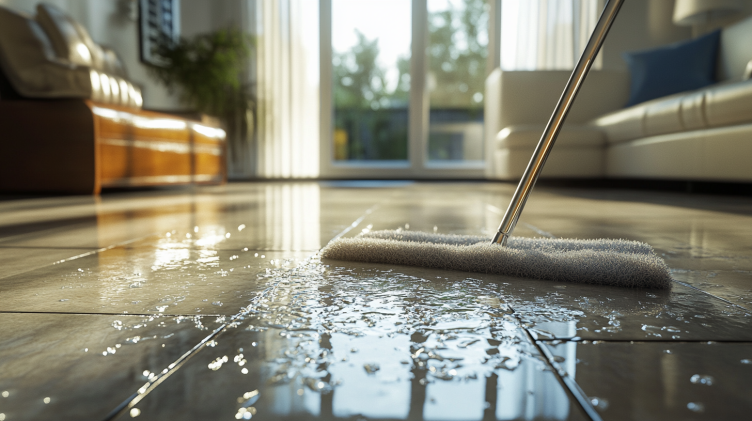
Conclusion
The foul, fishy smell you notice after mopping is usually due to the cleanliness of your mop, the quality of the water you use, or the build-up of grime in the floor tiles’ gaps. To prevent this, ensure proper mop maintenance, change your cleaning water frequently, and consider using floor cleaning sheets or steam mops for more thorough cleaning. By following these simple tips, you can keep your floors smelling fresh and clean—no matter the material!







